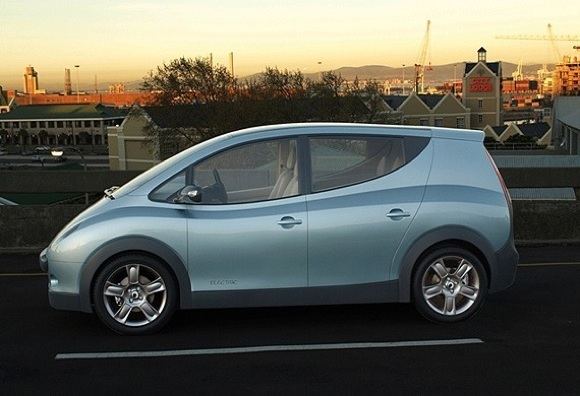Former type Private Products Joule Founded 2005 Defunct 2012 | Industry Automotive Number of employees 120 | |
 | ||
Key people Kobus Meiring (CEO)Keith Helfet (chief designer)Diana Blake (Sales & Marketing Director)Mike Lomberg (co-founder)Jian Swiegers (co-founder)Gerhard Swart (co-founder) Website | ||
Joule was an electric five seat passenger car by Optimal Energy, a South African company based in Cape Town. According to the company, it was to have a nominal driving range of 150 km and a top speed of 135 km/h. Designed to achieve a Euro NCAP 4 star safety rating, it complied with the stringent EU standards. It was never released commercially; production ceased in April 2012, and in June 2012 Optimal Energy announced its intention to close down.
Contents
Unveiling
The Joule was first unveiled to the general public at the 2008 Paris Motor Show on October 2, 2008. It underwent some interior and exterior changes, most notably the change from a six-seater to a 5-seater vehicle, before being revealed to the public at the 2010 Geneva Motor show on 2 March 2010 in a form that was close to the final version.
Optimal Energy
The Joule was the first electric car to be produced by Optimal Energy, the Cape Town based company has been working on the concept since 2004. The design of the car was done by Jaguar car designer Keith Helfet, who is best known for the XJ220, and the F-type concept car. The Joule showed the same 'flowing lines' as his previous designs.
Kobus Meiring, Optimal Energy CEO, suggested that sustainability of the Internal Combustion Engine vehicle has fuelled increasing need for sustainable vehicle propulsion systems. This, as well as increasing fuel prices and rising country taxes, caused Optimal Energy to embark on the production of a vehicle that could meet these needs.
Investment to date
Funding was primarily through government investments, in particular, the South African Department of Science & Technology (DST) through the Innovation Fund, as well as other private investments. The Innovation Fund invested about US$5 million in the project. The Industrial Development Corporation (IDC) of South Africa is a major shareholder, with 22% of equity in Optimal Energy.
Class
The Joule was classed as a five seat passenger car.
Specifications
Closure
A small pilot fleet of Joules was manufactured in conjunction with Hi-Tech Automotive in Port Elizabeth during 2010. The car was expected to be sold in South Africa as well as Europe from 2014, but production ceased in April 2012 after Optimal Energy failed to find a commercial partner. Optimal Energy announced its intention to close down in June 2012.
The inside story was that the government decided to cease funding at a critical time of the project's life and so destroyed the project and the company. Everyone lost their jobs and a great South African invention was destroyed. No other contender has of yet taken its place.
